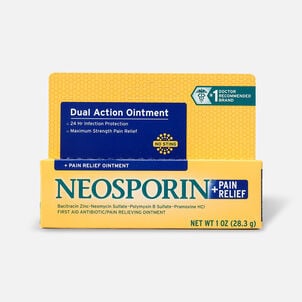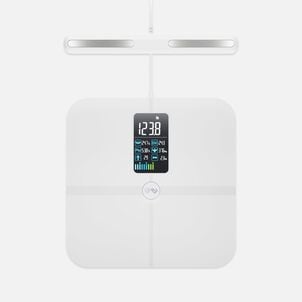To be reimbursable from an FSA or HSA, an expense must be for medical care. Some items or services may be for medical care or may be for personal use. To tell the difference, plan administrators often request a “letter of medical necessity," or LMN.
An expense is for medical care if the primary purpose for the expense is to treat, cure, mitigate, diagnose, or prevent a disease or illness, or to affect a structure or function of the body. Items and services that usually are personal, such as air conditioners, may be used for medical purposes, for example to reduce the symptoms of asthma. Other items and services, such as vitamins and exercise equipment, usually are used to maintain general good health, which is not medical care eligible for reimbursement, but may be used to treat or mitigate a disease, such as high blood pressure, osteoporosis, or obesity.
Medical care needs to be the primary purpose for the expense
An item or service is reimbursable as medical care only if an individual's primary purpose for the expense fits within the definition of medical care. Because a plan administrator is unable to look into someone's mind, the plan administrator will look at certain objective facts and circumstances to determine an individual's purpose. These include:
- Has a doctor or other medical professional determined that the individual (or a qualifying family member) has a disease or illness?
- Has a medical professional recommended the item or service to treat or mitigate the medical condition?
- Is the item or service medically effective?
- How soon did the individual purchase the item or service after the diagnosis of the medical condition?
- Are there less expensive treatments?
These questions don't need to be asked if the item or service has no use other than medical care (for example, x-rays and other diagnostic tests, supplies and equipment such as bandages and wheelchairs). These facts are relevant only when an item has a non-medical use.
LMN requirements and rules
There are guidelines for a plan administrator to determine if a personal use item is medical care, based on all the facts and circumstances of a particular case. There is no set requirement that every one of the facts and circumstances is present in every case. However, it always will be necessary to determine that a medical condition is present and that the item or service is for the treatment or improvement of the medical condition. The LMN provides the plan administrator with at least this information. (The term “letter of medical necessity" is misleading because there is no requirement that the treatment is necessary if it is for medical care. It is the shorthand plan administrators use for a letter from a health provider providing this basic information.)
However, a letter from a doctor or other health care practitioner stating that there is a medical condition and prescribing the item or service may not provide all the information a plan administrator may need. First, the medical use has to be the primary purpose for the expense. Second, the expense is not reimbursable if the individual would have purchased it anyway (would not have purchased it without the medical condition, a requirement called the “but for" test). The plan administrator may ask for information relating to some or all of the other facts and circumstances to determine if the medical use is the primary purpose for the expense and whether the “but for" test is satisfied.
Let's apply these rules to some concrete examples:
Jack's heart condition
Jack's doctor diagnoses Jack with a heart condition. The doctor recommends light exercise, such as brisk walking, to lessen the symptoms and reduce the risk of a heart attack. The next day Jack buys a $500 pair of athletic shoes and begins walking a mile every day. Jack has never walked for exercise or owned athletic shoes. Jack has a medical condition that the shoes will help, he buys the shoes right away, and he has never owned this type of shoes before. Jack did not buy the cheapest shoes available, but the rest of the facts and circumstances show that his primary purpose in buying the shoes is to help his heart condition and he would not have bought them “but for" the medical condition. Jack may be reimbursed for the athletic shoes from his FSA.
Jill’s high blood pressure
Jill has high blood pressure. Her doctor suggests she buy a blood pressure monitor. Jill buys a smart watch, which has a blood pressure monitoring function. Jill owns a smart watch but was thinking about upgrading it. After buying the new watch, she does not have to buy another blood pressure monitor. Jill has been using a smart watch, planned to buy one before the doctor made the recommendation, and chose an expensive device with many other functions besides monitoring blood pressure. Although Jill may use the watch for a medical purpose, the facts and circumstances show that the medical function is not Jill's primary purpose in buying the watch and she would have bought it or a similar watch even if she did not have the medical condition. The smart watch is not eligible for reimbursement.
James’ emphysema
James has emphysema. His doctor recommends light exercise, but James also has severe arthritis and is unable to walk for exercise. He builds a simple lap pool in his yard and uses it only to swim laps, which he does most days. His family members also sometimes swim laps in the pool. James works long hours and lives in a remote area, and it is not convenient for him to go to a gym or other facility with a pool on a regular basis. James uses the pool for medical purposes, he built it only after receiving the doctor's advice, and he built the most basic pool for the purpose. There are reasons why he does not engage in another kind of exercise. Although his family members also sometimes use the pool, the facts and circumstances indicate that James's primary purpose in building the pool is to treat his emphysema and he would not have built the pool otherwise. James may use his HSA for the cost of the pool.
Jane’s muscle strain
Jane has not had a medical condition and has been getting massage therapy once a month to reduce stress and improve her general good health. Jane's chiropractor diagnoses Jane with muscle strain from lifting a heavy object and suggests massage therapy might help the condition. At her next massage therapy appointment, Jane asks the therapist to focus on the strained muscles. Jane may have a medical purpose for this particular massage therapy appointment, but the facts and circumstances indicate that the medical purpose is not her primary purpose and she would have had the massage therapy even without the medical issue. Jane is not entitled to reimbursement for the massage therapy.
Why an LMN would have helped
In each of these situations, a LMN would tell the plan administrator that there is a medical purpose for the athletic shoes, the smart watch, the swimming pool, and the massage therapy, which usually are personal and not medical expenses. The plan administrator would need to know more of the facts and circumstances, however, to determine whether the medical purpose is the primary purpose and if the “but for" test is satisfied. This additional information may be included in the LMN or the plan administrator may request it separately.
These rules may seem very complicated, but when the answer to the question “is this an expense for medical care" depends on the facts and circumstances, there is no simple answer that applies in every case.
-
Thank you for visiting the FSA Store Learning Center! Don’t forget to follow us for more helpful tips on Facebook, Instagram, and Twitter!

















